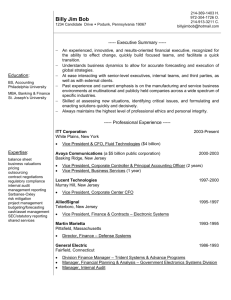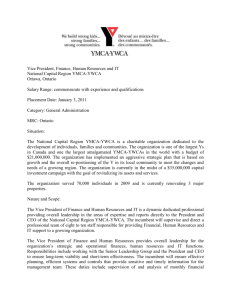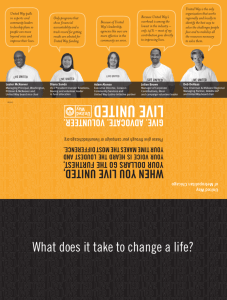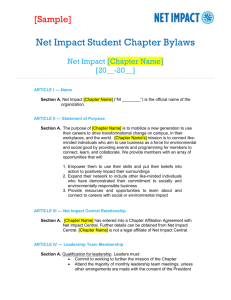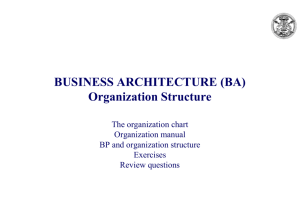Multidivisional Structure
advertisement
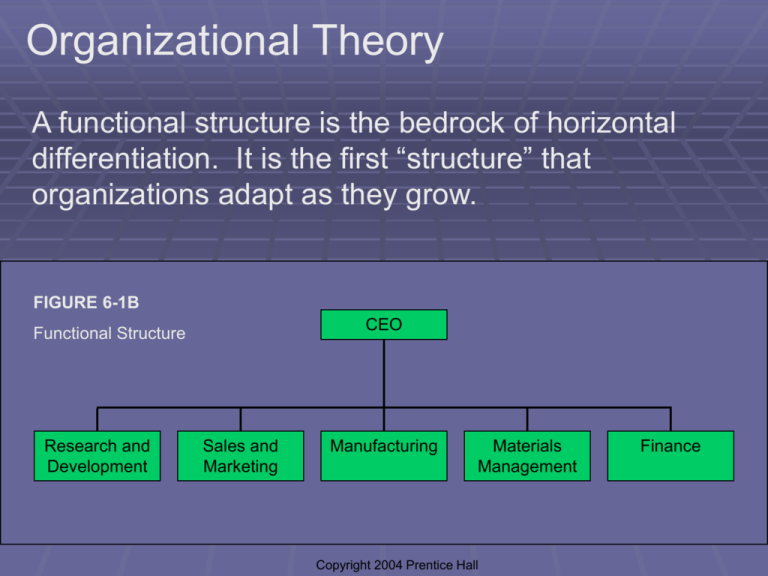
Organizational Theory A functional structure is the bedrock of horizontal differentiation. It is the first “structure” that organizations adapt as they grow. FIGURE 6-1B CEO Functional Structure Research and Development Sales and Marketing Manufacturing Materials Management Finance 1 Copyright 2004 Prentice Hall Organizational Theory Advantages of a Functional Structure Facilitates learning for employees as they learn from one another and become more specialized. People that are grouped together by common skills can supervise one another. Development of norms and values. 2 Organizational Theory Control Problems in a Functional Structure Communication problems — development of subunit orientations. Measurement problems — as functions become more complex, it’s often difficult to isolate each group’s contribution to product development. 3 Organizational Theory Control Problems in a Functional Structure Location problems—if centralized control at one geographical location does not allow the organization to handle manufacturing and support activities on a regional basis Customer problems—the ability to identify and satisfy unique customer needs may fall short 4 Organizational Theory Control Problems in a Functional Structure Strategic problems—top managers spend too much time addressing coordination issues for the various functions that they neglect the longer-term strategic problems of the company. 5 Organizational Theory Solving Control Problems with a Functional Structure 6 Copyright 2004 Prentice Hall Organizational Theory Functional structure is appropriate if the organization: Limits itself to producing a small number of similar products Produces those products in one or a few locations Sells them to only one general type of client or customer When production expands to more products, more locations, and/or more types of customers, more complex structure required 7 Organizational Theory Product Division Structure—a structure in which centralized support functions service the needs of a number of different product lines. Typically used by organizations whose products are broadly similar and aimed at the same market. 8 FIGURE 6-4 CEO Product Division Structure Vice President Sales and Marketing Vice President Research and Development Vice President Materials Management Vice President Finance PDM PDM PDM PDM Canned Soups Division Frozen Vegetable Division Frozen Entrees Division Baked Goods Division Centralized support functions Divisions 9 9 Copyright 2004 Prentice Hall Organizational Theory Multidivisional Structure—a structure in which support functions are placed in self-contained divisions. Typically used by an organization whose products are very different and that operates in several different industries. 10 FIGURE 6-6 Multidivisional Structure. CEO Corporate Headquarters Staff Corporate Senior VP Senior VP Senior VP Senior VP Managers Marketing Finance Materials Research and Management Development Divisional Managers Division A Division B Division C Division D Support functions Support functions Support functions Support functions Functional Managers 11 11 Copyright 2004 Prentice Hall Organizational Theory Disadvantages of a Multidivisional Structure • Managing the Relationship between Corporate and Divisional Management— need for balance between centralization and decentralization of decision making. • Coordination Problems between Divisions— divisions may begin competing for resources rather than cooperating. 12 Organizational Theory Disadvantages of a Multidivisional Structure • Transfer Pricing—the price at which one division sells a product to another division can be a problem spot. • Bureaucratic Costs—costs will go up with each division having its own set of support functions. 13 Organizational Theory Disadvantages of a Multidivisional Structure • Communication Problems—we know that communication problems occur in tall hierarchies, and multidivisional structures tend to be the tallest. 14 Organizational Theory Product Team Structure—a divisional structure in which specialists from the support functions are combined into product development teams. Typically used by an organization whose products are very technologically complex or whose characteristics change rapidly to suit customer needs. 15 FIGURE 6-8 Product Team Structure. CEO Functions Vice President Research and Development Vice President Sales and Marketing Vice President Manufacturing Vice President Materials Management Vice President Finance Product Development Teams PTM Product Division PTM PTM Product Division Product Division Functional specialist PTM Product Team Manager 16 16 Copyright 2004 Prentice Hall FIGURE 6-9 Geographic Structure Regional Operations Regional Operations Individual stores CEO Central Support Functions Regional Operations Regional Operations 17 17 Copyright 2004 Prentice Hall FIGURE 6-11 Market Structure CEO Central Support Functions Commercial Division Consumer Division Government Division Corporate Division 18 18 Copyright 2004 Prentice Hall Organizational Theory A matrix is a rectangular grid that shows a vertical flow of functional responsibility and a horizontal flow of product responsibility. Matrix organization employees are often referred to as two-boss employees because they report to two superiors: product manager and functional manager 19 FIGURE 6-12 CEO Matrix Structure Vice President Engineering Vice President Sales and Marketing Vice President Finance Vice President Research and Development Vice President Purchasing Product A Manager Product B Manager Product Team Product C Manager Product D Manager Two-boss employee 20 20 Copyright 2004 Prentice Hall Organizational Theory Advantages of Matrix Structure: • Reduce subunit orientation through the use of cross-functional teams. • Increase learning by facilitating communication across functions. 21 Organizational Theory A multidivisional matrix structure provides for more integration between corporate and divisional managers and between divisional managers. This structure makes it easier for top executives from the divisions and from corporate headquarters to coordinate organizational activities. 22 FIGURE 6-13 Multidivisional Matrix Structure CEO Senior Vice President Marketing Senior Vice President Finance Senior Vice President Research and Development Senior Vice President Materials Management Automobile Products Division Personal Computer Division Consumer Electronics Division 23 Copyright 2004 Prentice Hall 23 Organizational Theory A recent innovation in organizational architecture is the use of network structures. A network structure is a cluster of different organizations whose actions are coordinated by contracts and agreements rather than through a formal hierarchy. 24 Organizational Theory Advantages of Network Structures: Production costs can be reduced. Bureaucratic costs associated with complex structures are reduced. Facilitates organization behaving in an organic way; underperforming partners can be replaced. Lower-cost (foreign) inputs. 25 Organizational Theory Disadvantages of Network Structures: Coordination problems. Difficult to obtain the ongoing learning process seen inside an organization. Flexibility that comes with being able to remove and add network partners assumes that other organizations can be trusted with proprietary information. 26


